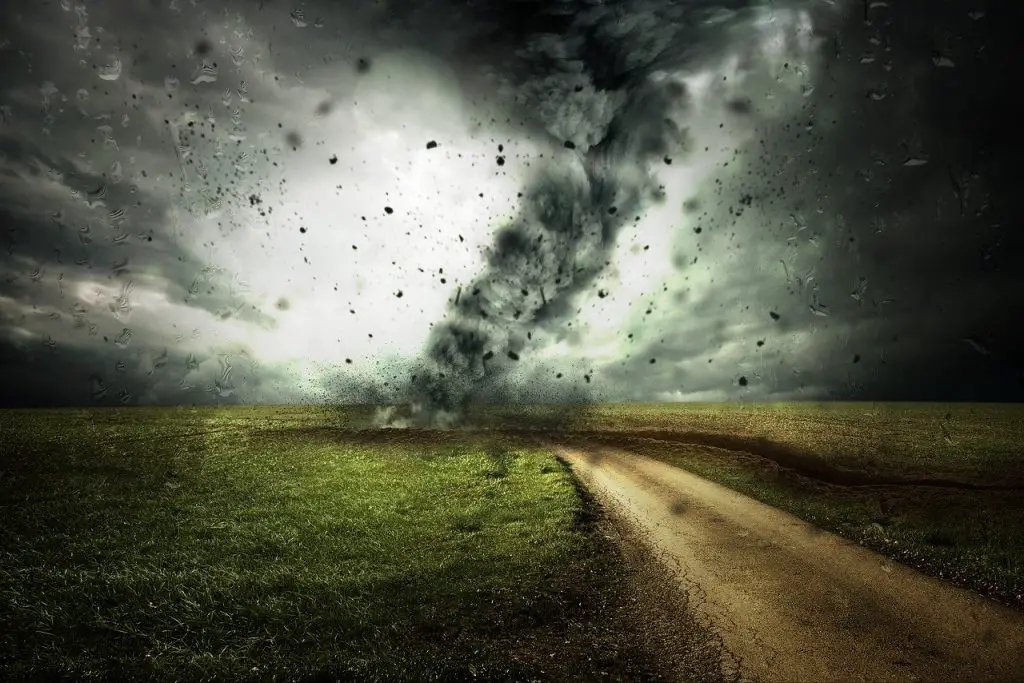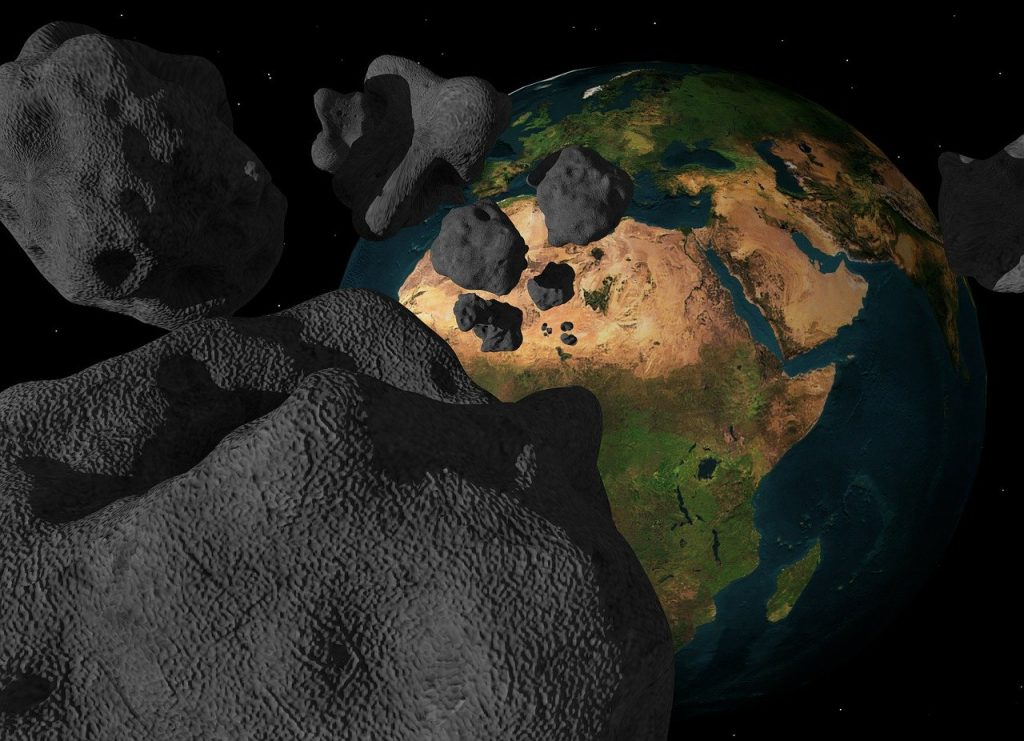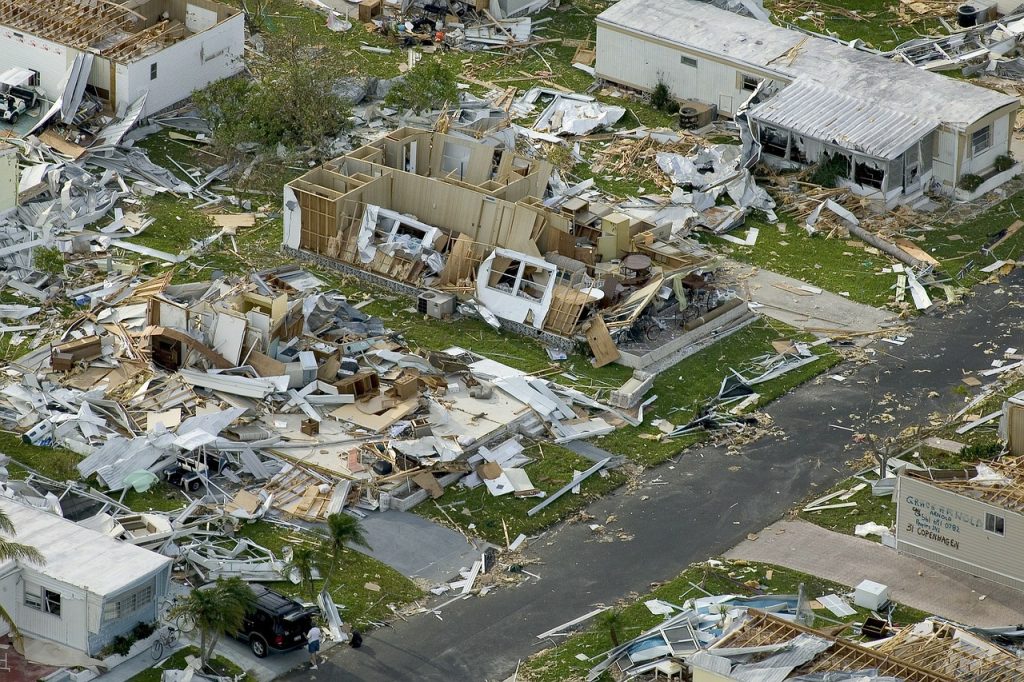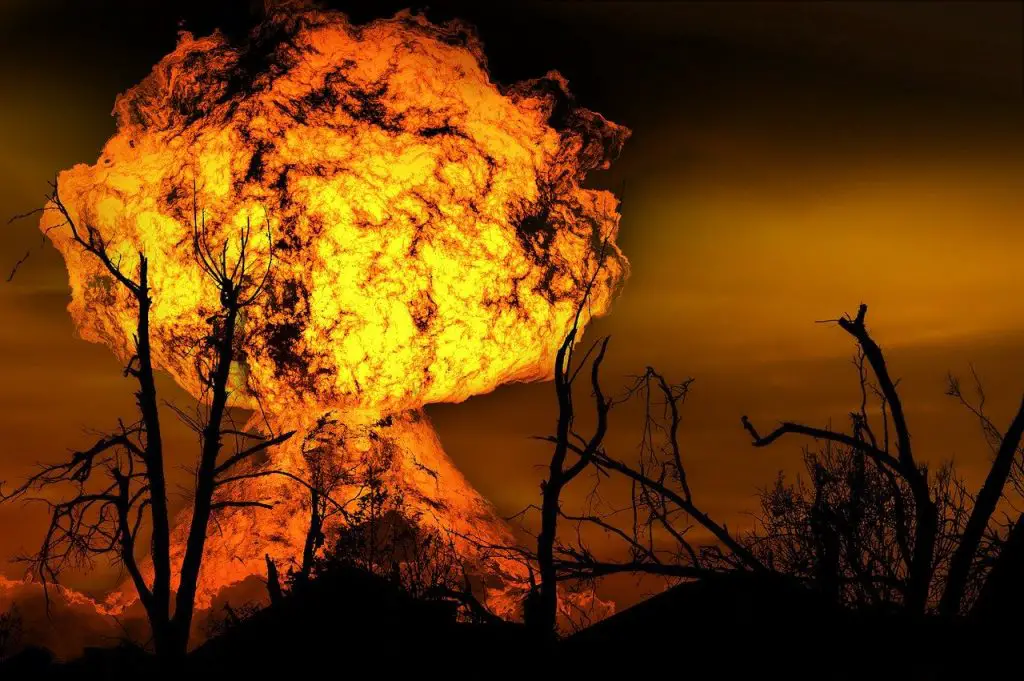A One-family House Fire Is an Example of Which of the Following Levels of Disaster?
"Sometimes it takes a natural disaster to reveal a social disaster."
Jim Wallis

A natural disaster can be divers equally a significant adverse result resulting from the earth's natural processes.
Natural disasters often have severe consequences for many people and besides for animals and plants.
It unremarkably also destroys buildings and thus leads to a loss of peoples' homes.
Due to the global warming upshot, natural disasters volition become more common in the futurity.
Therefore, flesh has to be prepared to deal with these adverse events.
In the following, the types, causes, effects, solutions and also examples concerning the natural disaster problem will be examined.
- Geological
- Hydrological
- Meteorological
- Wildfires
- Space disasters
Geological disasters include avalanches, landslides, volcanic eruptions, sinkholes and earthquakes.
The chief hydrological disasters are floods, limnic eruptions and tsunamis.
Meteorological disasters include blizzards, cyclonic storms, hailstorms, ice storms, heat waves, cold waves, thunderstorms, droughts and tornadoes.
Wildfires are natural disasters that occur naturally due to droughts and lightning but are also often caused by humans.
Space disasters include touch on events of meteors or asteroids and solar flare.
Impact events mean that the globe will be eventually hit by a meteor or asteroid.
Solar flare refers to an upshot when the sun releases big amounts of solar radiation, which can destroy our electric equipment on earth if the radiation is strong plenty.

- Global warming
- Natural activities in the world'southward crust
- Tectonic movement
- Moon activity
- Mining
- Deforestation
- Soil erosion
- Seismic activity
- Air pressure
- Sea currents
- Pollution
Global warming is a great cause of natural disasters since it affects our planet in several unlike ways.
Global warming leads to an increment in temperature of oceans, which in plow leads to more than and stronger hurricanes and tropical storms since hurricanes get their free energy from the seawater.
Moreover, the probability of droughts increases since the planet's average temperature increases.
It is quite difficult to prove the causal connection betwixt climate alter and natural disasters since at that place are many other variables, but the increment of natural disasters over the last decades likely leads to the conclusion that global warming is a major correspondent to natural disasters.
Natural disasters are as well caused past natural activities in the crust of the world.
Natural processes tin cause tension inside the globe's crust which are sometimes released through earthquakes.
Since the earth is not made up of i single surface but instead of many plates sliding on our planet's underlying mantle, a shift or standoff of these plates tin have severe adverse effects.
This can lead to earthquakes, volcanic eruptions and tsunamis.
The moon is known to have a strong influence on the natural processes on world.
According to latest studies, researchers constitute that the moon has the potential to cause huge earthquakes which may cause huge amounts of devastation and death.
It is controversial whether mining activities can cause natural disasters.
Some scientists blame mining for landslides and soil and mountain erosions.
Others argue that landslides occur naturally due to heavy rainfalls and flash floods.
Mining tin can thus potentially contribute to the emergence of natural disasters, although it is non a primary driver.
Deforestation tin contribute to an increase in natural disasters since forests usually foreclose floods and droughts since they balance and agree back natural groundwater resources.
By deforestation, the footing is no longer covered and thus the probability for floods and droughts increases dramatically.
Soil erosion can lead to a high level of deposition of country, which in turn can lead to a loss in fertility and thus to famine for local populations.
Soil erosion can likewise cause landslides which can cause serious damage to nature too equally to humans.
The seismic activities inside our earth can crusade earthquakes.
These earthquakes can cause death and injuries for many people as well as for animals and other life forms.
It also leads to a loss of many homes then that people who survived often have to leave their home countries in order to find a meliorate future.
At that place is a connection betwixt the air pressure and some natural disasters like hurricanes, heavy rains and thunderstorms.
Thus, air pressure naturally contributes to natural disasters in a certain style.
Changing ocean currents can lead to a change in the ocean temperature which in turn tin damage or even kill large populations of fish and other sea animals and plants.
Moreover, irresolute currents and therefore a possible local increase in water temperature can lead to a college probability for hurricanes or tropical storms.
Since our nature is a quite sensitive organism, pollutions of all sorts may atomic number 82 to an imbalance of the earth which in turn may create natural disasters of several sorts.

- Ecology issues
- Humanitarian crisis
- Damages to infrastructure
- Public health bug and diseases
- Food scarcity
- Water scarcity
- Displaced population
- Injuries
- Fatalities
- Emotional shocks
- Economic impact
There are severe effects of natural disasters on the whole environmental system.
Hurricanes and other storms tin can destroy the lives and also the livelihood of many people, peculiarly of those who live most the coast since they are also in danger of tsunamis.
Moreover, draughts may lead to a migration of many people who just will no longer exist able to make their living in their home countries since at that place is not enough water left to abound plants or to raise cattle.
Natural disasters non only have dramatic effects on humans but they likewise destroy the habitat of many animals and plants which may in the worst case fifty-fifty become extinct.
Natural crises pb to humanitarian catastrophes all over the world.
This includes an increase of famine and too the spread of diseases, especially in poor developing countries since they will often not be able to fight the consequences of natural disasters in an effective fashion due to a shortage and resources and as well due to a lack of technological knowledge.
Natural disasters may force many people to migrate to other countries since their livelihood has been destroyed and thus, they will strive to search for a meliorate life in other places on earth.
Natural disasters usually also imply great impairment to the affected infrastructure.
This includes the devastation of important buildings like hospitals or airports.
Moreover, roads may be blocked through copse and thus the transportation organisation may collapse as a result of natural disasters.
Natural disasters often destroy many important facilities that are meant to go on living conditions stable.
If these facilities are destroyed, there volition likely be an increase in diseases since the hygienic conditions dropped equally a consequence of the natural disaster.
Making things worse, natural disasters often as well destroy hospitals and other medical facilities.
This means not only the likelihood of diseases increases due to lower hygienical standards, also the supply of medicines volition be more than difficult.
As a upshot, it is more likely that people volition not exist able to recover from their diseases.
Some other effect of natural disasters can be a scarcity of resources, which is especially severe when it comes to the supply of food.
If big areas of country have been destructed by natural disasters, farmers volition no longer be able to harvest enough crops or to raise enough cattle in gild to meet the demand.
Thus, the local population is likely to suffer from starvation.
Another related consequence is the topic of water scarcity.
Due to natural disasters, natural water sources like rivers or lakes may be polluted and thus the water supply will exist decreased dramatically.
A scarcity of h2o supply will be especially severe when droughts hitting areas for a long period of time.
Farmers will no longer be able to raise enough crops.
Moreover, fifty-fifty the drinking water volition go a scarce resources which may eventually lead to migration since h2o is essential for all life on earth.
Due to natural disasters, people often lose all their belongings, including their houses and their livelihood.
If this happens, they take to make up one's mind if they volition be able to rebuild all of information technology or if they instead see a better chance to motility to other countries in order to be able to find a better futurity at that place.
There will exist an increasing number of migrants in the hereafter due to the fact that global warming will greatly reduce the fertility make many areas since in that location volition not be enough water left to abound crops or to raise cattle.
Thus, many people will be forced to leave their homes and to migrate to other countries.
Many people will suffer from injuries caused by natural disasters.
Making things worse, medical handling in the affected areas volition be quite limited since many medical facilities may have been destructed too.
Information technology will therefore not exist possible to treat many injuries in an effective way which may cause adverse long-term health effects.
Many people lose their lives as a consequence of natural disasters.
Natural forces are but as well strong to save all people.
Moreover, especially in developing countries, warning systems are often not adept enough to be able to save the lives of many people.
In addition, medical facilities are often not avant-garde enough and will not exist able to deal with a large number of heavily injured people at once, which may result in increased mortality.
Autonomously from physical injuries, many people volition also suffer from mental conditions since they will non exist able to process and handle the consequences of natural disasters accordingly.
Many people lose their children or other family members to natural disasters which volition shock them emotionally for quite a long time or even for their whole life.
It will accept a long fourth dimension for many people to recover from these kinds of emotional horrible events.
To make things worse, at that place are usually neat adverse economical effects from natural disasters.
For example, an earthquake can lead to a devastation of big areas of land.
People will no longer exist able to make their living from farming in these areas.
Thus, they will lose their livelihood because of the event of this disaster.

- Emergency measures
- Investments in risk reduction
- Information sharing on newest research findings
- Reforestation
- Stable buildings
- Education
- Technology
- Governance
- Economic support
Since we will not be able to entirely cease the occurrence of natural disasters, it is crucial to practise our best to mitigate the adverse furnishings.
This ways having effective early warning systems in identify which propose people to search for shelter before natural disasters hit.
Moreover, the medical facilities have to be secured against natural disasters so that injured people will be able to get medical support.
In addition, governments in high-risk countries should make agreements to help each other in case one state is affected past a natural disaster.
With these emergency measures, the furnishings of natural disasters can be mitigated to a pregnant degree, even though we will never be able to protect all people from the horrible adverse effects.
Investments in risk reduction may also protect people from the adverse effects of natural disasters.
This could mean taking prevention measures even before natural disasters occur.
For example, countries tin can build barriers which in case of a tsunami prevent information technology from hitting the coast.
It is crucial that countries all over the world share their newest findings and insights on measures for how to protect people from the furnishings of natural disasters.
Since adult countries usually have larger budgets for research, they should supply developing countries with insights that help these countries to take action against natural disasters.
Reforestation is an effective measure out against some natural disasters, particularly against landslides, droughts and floods.
The roots of trees hold the soil together and besides store large amounts of water.
Moreover, reforestation is also a counter-mensurate to the issue of global warming.
Global warming also contributes to an increment in natural disasters since it increases the body of water temperature which contributes to more than powerful storms.
Thus, reforestation tin indirectly contribute to a decrease in the probability of hurricanes and other storms.
We have to make sure that our buildings are able to survive stiff storms and likewise earthquakes.
This is possible with our current knowledge, however, it takes quite avant-garde building techniques in order to reach this kind of buildings.
Moreover, poor countries may often have not the knowledge nor the resources to build stable homes.
Thus, especially people in these countries must improve in order to exist more than resistant to natural disasters.
Information technology is in the responsibility of developed countries to provide help and share insights in club to make buildings more resistant to natural disasters, also in poor countries.
Teaching plays an important role in the context of natural disasters.
On the one hand, it helps people to understand how they contribute to natural disasters in their daily lives.
For example, our consumption behavior leads to an increase in the speed of global warming which in turn leads to more storms.
On the other paw, educational activity also helps people in the sense that they volition be taught how to conduct in case of emergency and thus to be able to save their lives.
Technology is an important part of the overall film to bargain with natural disasters.
Although we volition never be able to fully prevent all kinds of natural disasters, technology tin aid to mitigate the adverse consequences of these events.
For instance, improved early alert systems can save many lives which would otherwise be lost due to tsunamis or other natural disasters.
Emergency plans on how to bear in case of natural disasters take to be prepared and improved by governments in the affected areas over time.
Through profound emergency plans, many people will be able to survive natural disasters.
Governments accept to make certain that these plans are up to date and also adjust them when they get new insights.
Since the biggest natural disasters ofttimes happen in poor countries, rich developed countries tin assistance them with fiscal back up in order to recover from the adverse consequences.
For example, it will take lots of money to rebuild the destroyed infrastructure.
This can exist achieved much faster if financial support is supplied by other countries.

The Shaanxi earthquake in 1556 is considered the deadliest earthquake in recorded history and killed approximately 830,000 people.
In 1839, Coringa, a port city in India, had been striking past a massive cyclone which caused the death of 300,000 people.
The Haiphong typhoon hitting parts of Vietnam and the Philippines in 1881 and caused more than than 300,000 fatalities.
The Yellowish River Inundation happened in 1887 on the Huang He river in China.
It killed around 900,000 people and is therefore ranked as one of the deadliest natural disasters in history.
The Haiyuan earthquake in 1920 Haiyuan County in Mainland china. It caused more 270,000 deaths.
The Bhola whirlwind in 1970 stroke both India and Pakistan and caused more than than 500,000 fatalities.
Information technology is therefore known every bit the deadliest tropical cyclone in the recorded history.
In 1976, an earthquake hit the region of Tangshan in China.
More than 240,000 people died because of this natural disaster.
Hurricane Andrew was a hurricane of category v that hit the Bahamas, Louisiana and Florida.
Although the number of fatalities was relatively depression, the economic harm was i of the largest in history and amounted to 27.iii billion USD.
The Bam earthquake happened in 2003 in Iran and killed around 26,000 people.
The epicenter of the Indian ocean earthquake in 2004 was in Sumatra, Indonesia.
It too caused a tsunami. The estimated fatalities corporeality to over 225,000.
The category v Hurricane Katrina hit Louisiana and Florida in 2005.
It caused over 1000 fatalities and the impairment amounted to 125 billion USD.
The convulsion in Kashmir, Pakistan in 2005 caused between 80,000 and xc,000 fatalities.
Additionally, millions of people had to be displaced.
The Sichuan convulsion in Cathay in 2008 caused almost 90,000 deaths and caused damage amounting to 150 billion USD.
Whirlwind Nargis hitting Myanmar in 2008 and is known as the worst natural disaster in the history of the land.
It is estimated that this cyclone caused around 140,000 fatalities.
The earthquake in Haiti in 2010 acquired massive destruction.
The estimates of fatalities range between 100,000 and over 300,000, depending on the source.
The 300,000 approximate is the official number released by the government.
In 2011, the Tōhoku convulsion off the coast of Japan caused around 16,000 deaths.
Natural disasters are a great threat to humanity.
Although they occurred long before the first homo populated the planet, we likely contribute to an increase in natural disasters through our behavior.
The number of natural disasters seems to be positively correlated to an increase in the earth's temperature.
Since we contribute to global warming through the emission of greenhouse gases, we also indirectly contribute to an increase in natural disasters.
However, we will not be able to entirely forestall natural disasters to happen.
Instead, we should improve our emergency measures in order to save as many people every bit possible.
All countries should work together in society to mitigate the trouble of natural disasters and ensure a livable future for future generations.
Sources
https://en.wikipedia.org/wiki/Natural_disaster
https://ourworldindata.org/natural-disasters
https://www.who.int/environmental_health_emergencies/natural_events/en/

About the author
My name is Andreas and my mission is to brainwash people of all ages almost our ecology problems and how everyone can make a contribution to mitigate these issues.
As I went to university and got my Primary'southward degree in Economics, I did enough of enquiry in the field of Development Economics.
Afterwards finishing university, I traveled around the globe. From this time on, I wanted to make a contribution to ensure a livable futurity for the side by side generations in every role of our beautiful planet.
Wanna make a contribution to save our environment? Share it!
Source: https://environmental-conscience.com/causes-effects-solutions-for-natural-disasters/
0 Response to "A One-family House Fire Is an Example of Which of the Following Levels of Disaster?"
Post a Comment